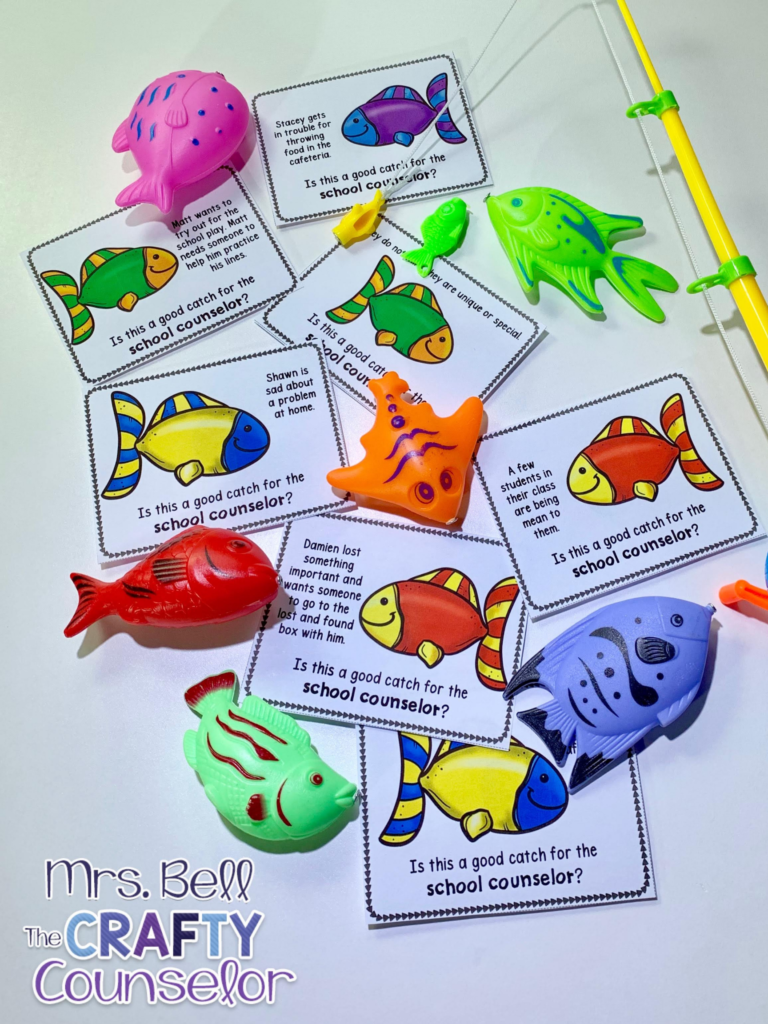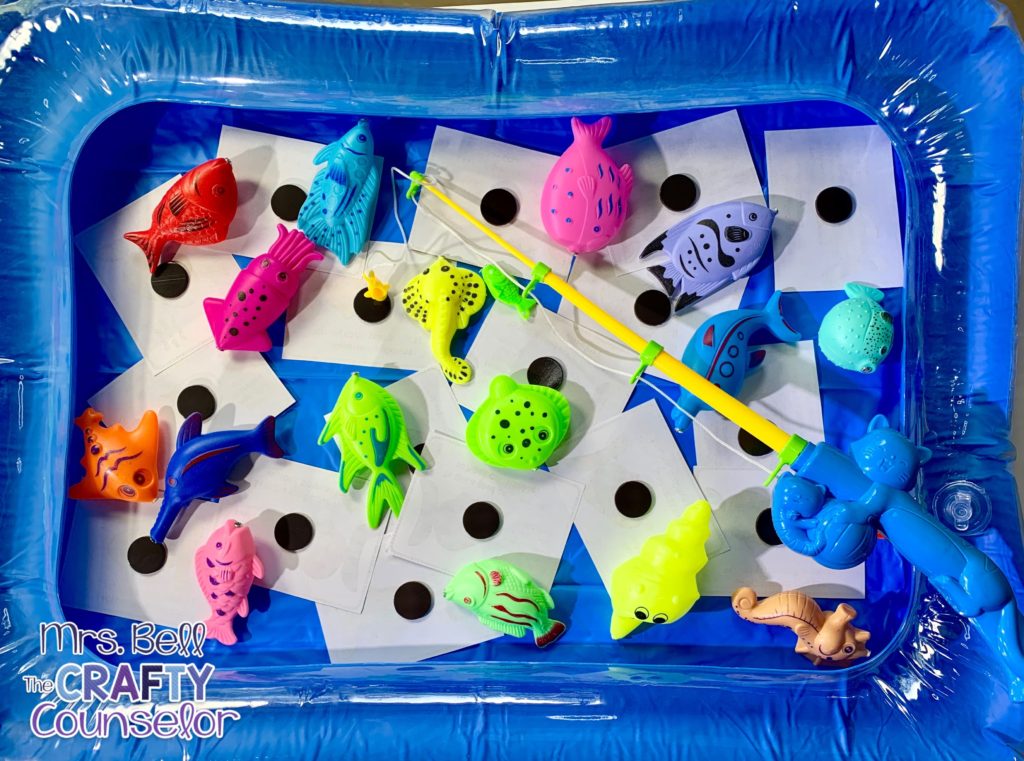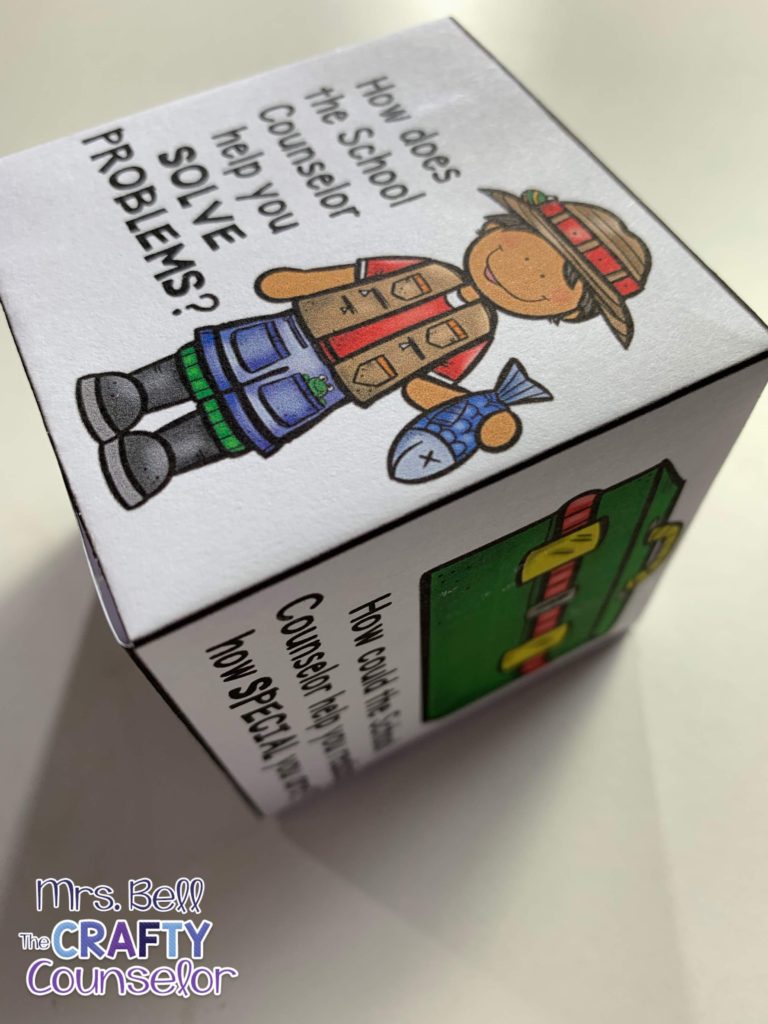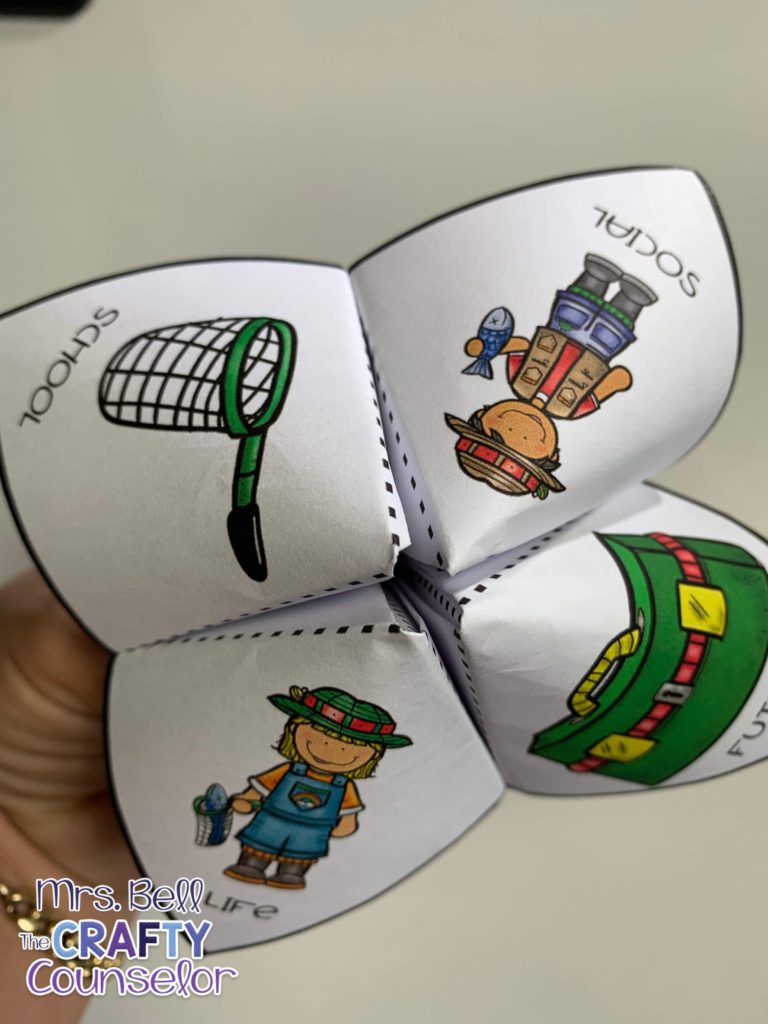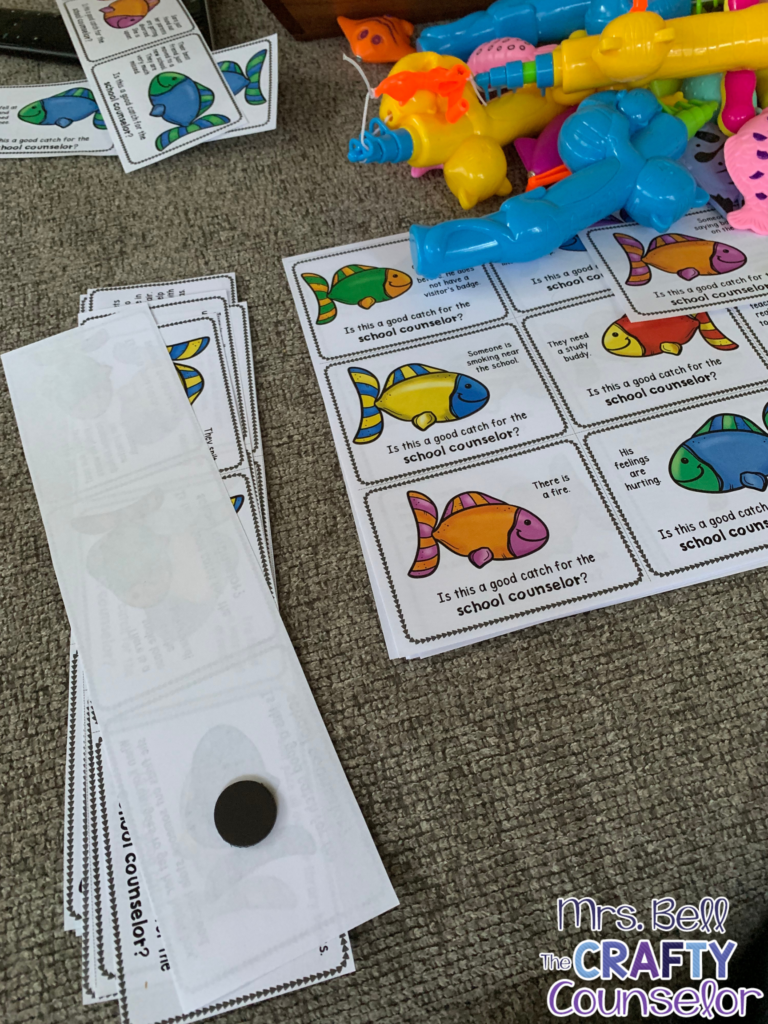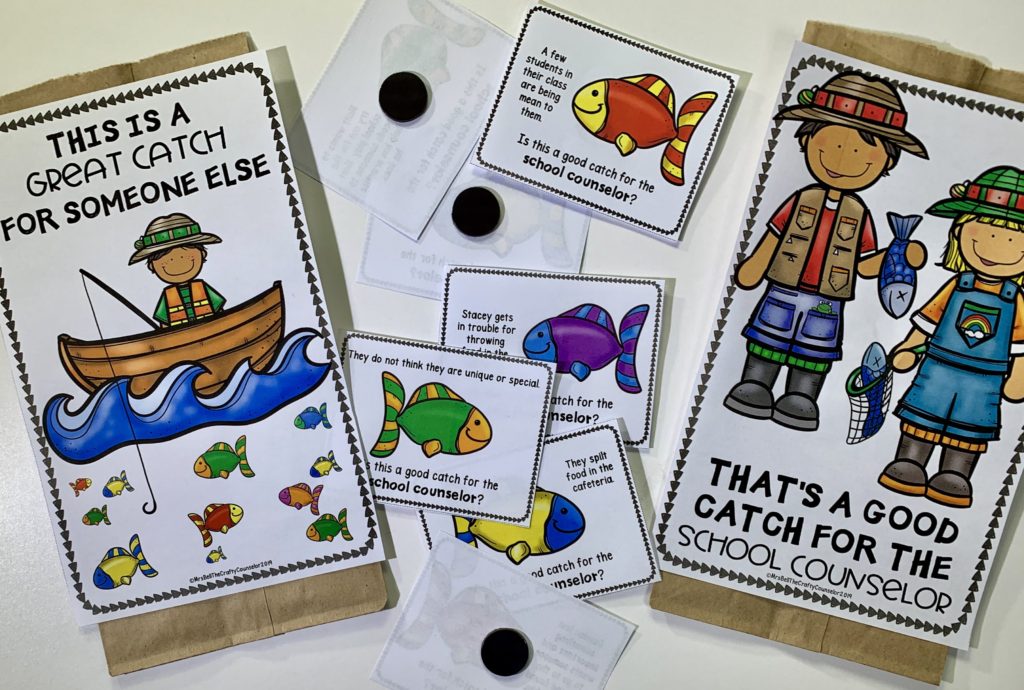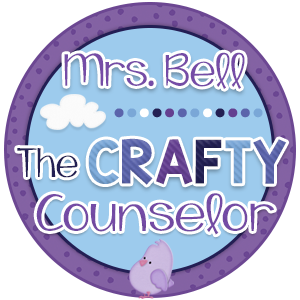A Fishing Trip as Your School Counselor Introduction Lesson?
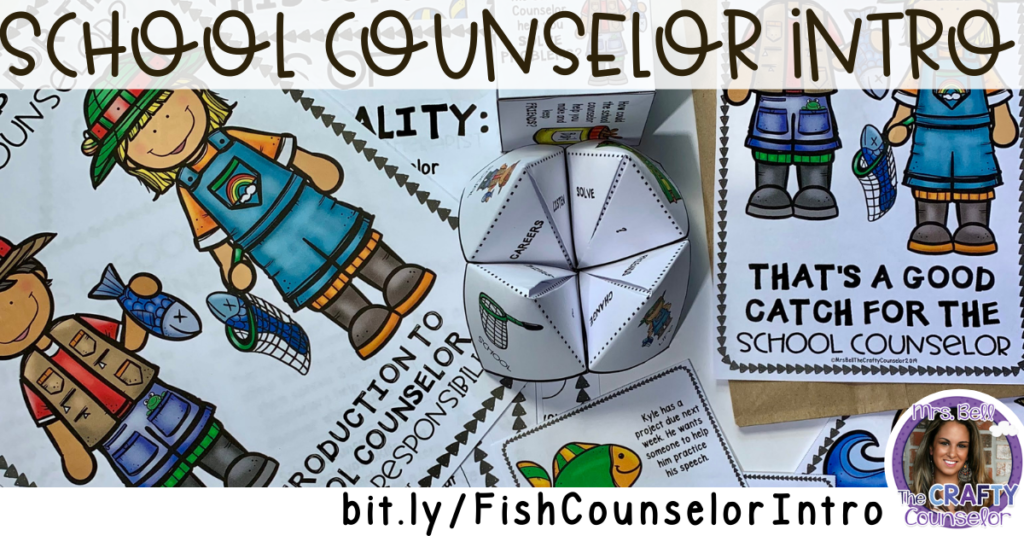
Okay, maybe I don’t actually take students fishing as your school counselor introduction lesson. You don’t literally have to go fishing with kids to show how important it is to you that all students know who you are and how they can access your services. Take the first step towards introducing yourself to your students with a school counselor introduction lesson.
First Classroom Impression
The best way to get students to know you is to show your face in their classroom. My goal is to get into every classroom within the first few weeks of school to introduce myself to the students and staff.
My objectives for that first classroom counseling lesson are to:
- Introduce myself and highlight where to find me
- Clearly explain the process of requesting to come see counselor
- Explain counselo roles and responsibilities
- Outline how counselor can help in an extremely engaging and interactive way, helping students to feel comfortable enough to seek counselorvout in the future
What better way to introduce myself than to take my students on a fishing trip?! I can bring the fishing to them with this adorable counselor introduction activity.
School Counselor Introduction Lesson
My plan for this classroom counselor lesson is to introduce myself, establish my purpose, and complete a fun activity that helps the students feel connected to me and my counseling program. I will use all of these fun resources with my second graders.
To do this school counselor introduction lesson the same way as me, you will need:
- School Counselor Introduction Lesson from my TeacherPayTeacher store Mrs. Bell The Crafty Counselor
- Magnets, I find the circle shaped sticker magnets are the easiest and most durable
- Fishing Kit including pools, fish/creatures, and blow up pond
- Two Sorting Containers or Paper Bags
Check out the information below outlining how to take your students fishing and facilitate this classroom counseling lesson!
Conversation Cubes and Cootie Catchers
When starting the lesson, give a quick little bit of personal information to make connections with students. Then, ask students, “What does it mean to be a school counselor” having an open discussion about their definitions of the job. Premake the conversation cubes and cootie catchers to save time, or have students assemble the items working in groups.
After, pass out the conversation cubes and cootie catchers. Give your students a few minutes to group up and play with the conversation cubes and cootie catchers. This gives students the chance to answer the questions on the cube while brainstorming what it is they think a School Counselor does. Circulate the room, answering any student questions.
This activity acts as an icebreaker allowing students to get more comfortable with each other as they start to think about the lesson’s content. This quick, low-stress interactive activity increases student engagement and buy-in towards you and your lesson.
After however much time you feel appropriate, ask volunteers to discuss their answers to the questions with the class. I like to see how student’s initial answer to the question, “what is it you think a school counselor does” may have changed.
Posters/Teaching Tools
After collecting the cootie catchers and conversation cubes, use the posters to guide the next part of the conversation. Use these posters to briefly cover your main roles and responsibilities as their School Counselor.
Have students turn to a partner and discuss their answer to the following questions:
- 1) What kind of jobs/problems at school would be good for the School Counselor to solve?
- 2) What is an example of a problem you could take to the School Counselor?
After a bit of time has passed for students to discuss their answers, you can introduce the fishing game. It is my favorite part of this school counselor introduction lesson.
Get Crafty and Assemble
The next part of the lesson involves an interactive discussion around different types of problems that can arise. Students decide if they think the problem would best be solved by the school counselor or if someone else may be better at solving that problem.
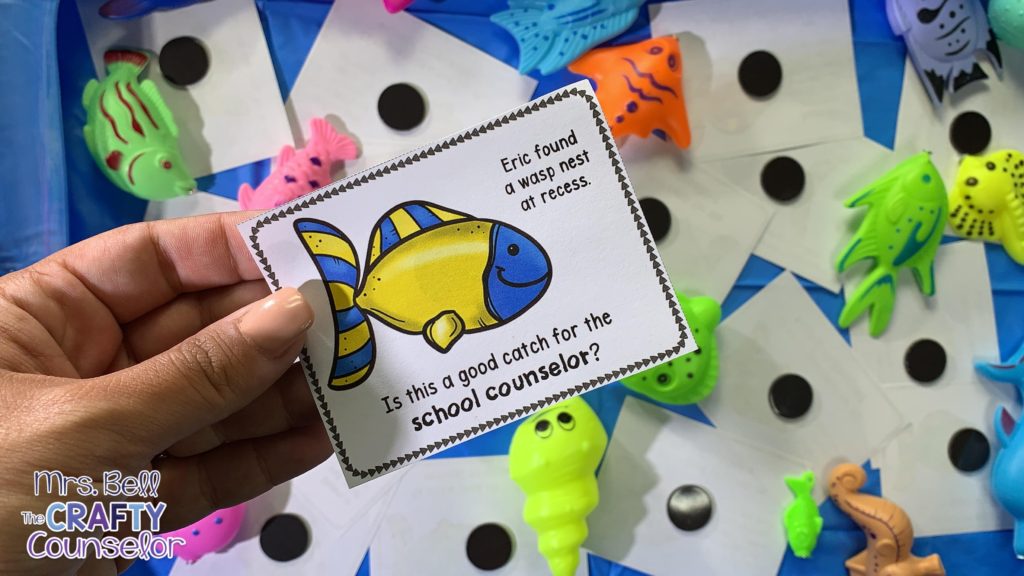
I got this fishing kit off of Amazon, and it really took the lesson up a notch and got students super interested. It was easy to set up, disassemble, and store until the next lesson.
I highly recommend it. If you don’t want to get quite this interactive, use the cards on their own.
If you plan on having students fish for situation cards, follow these steps to blow your student’s minds:
- Print all situation cards and the two sorting area labels (download here)
- Laminate situation cards
- Cut apart each of the situation cards
- Adhere magnets to the back of the cards
- Place the cards face down with the magnets facing up, in a container that resembles the ocean or water.
One Last Crafty Step
You will also need to create two card sorting areas.
These sorting areas can be made from:
- Small bins you place the labels in front of
- Brown paper bags you glue the labels to
- Separate piles you create by placing the labels on a table

Voilà, you’ve created a school counselor introduction activity that will get your students excited and engaged!
Situation Card Game
At school, many people can help students solve their problems. Not every problem that arises needs to be brought to the School Counselor. Have students “fish” for scenarios you can discuss as a group as to which are best solved by the School Counselor. Students decide if it’s a “good catch” for the school counselor or if they should throw it back for someone else.
To play, place the situation cards, face down, in a water-like container (or a messy pile). One at a time, students come up and fish for a card using the fishing poles (or pick a card from a pile). The student reads the statement aloud and answers the question, deciding if the School Counselor is the best person to handle each situation.
Decision Time

I sprinkle in these random sea creatures. They don’t serve any purpose other than making my students laugh a bit. 

Once students get a card, they decide if it would be a good problem for the School Counselor to solve. Students will think about each scenario in the scope of your role as the school counselor of their school.
Discussing each scenario will help solidify student’s understanding of your roles and responsibilities as their School Counselor. This activity gives students an idea of what they may need to bring to your attention after the lesson ends.
Once the student decides if it is a scenario that should involve the school counselor, they slide the card into the container labeled “that’s a good catch for the school counselor” or the container labeled “this is a great catch for someone else.”
Discuss their answers and decisions with the class and kindly help and guide students who are struggling.
This game will help students recognize the best way to use their time with the School Counselor. This school counselor introduction lesson is so helpful in helping students to discern the types of situations that should be brought to you as the School Counselor.
Activity Sheets and Student Referral Sheets
Wrap up the lesson by having students complete the activity sheets. They can use this like an exit ticket or a recap of all they’ve learned about all the awesome things you can do for them at school.
After students complete the activity sheets, explain to students how to fill out the referral sheets. Work with the teacher to establish a place that is accessible to all students where the referrals will be housed. Come up with a system with the teacher for how those referrals will make their way back to you.

Get a System
Most teachers slide these referral sheets into my mailbox (facedown) as they are able. The wonderful receptionists at the front desk collect these for me from students who show up wanting to speak with me. I explained to them how I use them with students, and they decided to keep a stack handy to use as needed. They help me immensely by speaking to the students that show up randomly and assessing the level of concern. If they see that a student marks that their problem is urgent, the front desk staff can alert me quickly on the radio I carry with me daily. I’ve been able to better serve my students in need since I teamed up with the office staff in this capacity.
Once the referral sheets are explained, and the system is established, say your goodbyes to your students. Congratulations! You finished a school counselor introduction lesson. You can now rest assured your students know exactly who you are, the services you offer, and precisely how to find you.
Good luck in your journey this school year! I wish you all the best in teaching your students your roles and responsibilities as their School Counselor.
Stay Connected:
- Check out My TeachersPayTeachers Store
- Like Me on Facebook
- Follow Me on Instagram
- Pin Me on Pinterest
- Create With Me on Etsy
If you do this school counselor introduction lesson at your school, let me know how it goes! Message or email me pictures of this resource in action, and you may receive a special surprise!
Other School Counselor Introduction Lessons
Check out some of my other counselor introduction blog posts and lessons on TpT.
- School Counselor Superpowers (Blog Post and TpT Link)
- School Counselor Superpowers Google Slides Activity (TpT Link)
- Walk a Mile in a Counselor’s Shoes (Blog Post and TpT Link)
- Whooo’s the School Counselor (Blog Post and TpT Link)

Read more...
Share it...
You might also like...

Hi, I'm Ashley!
I am a school counselor who helps educators to change the lives of students with engaging, creative, and meaningful SEL resources.


